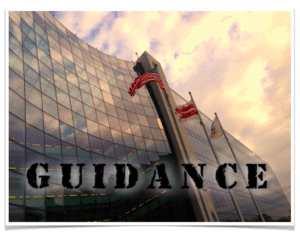
Raising capital by issuing tokens that rely on distributed ledger or blockchain technology has been clouded by regulatory uncertainty since the practice emerged during the initial coin offering or “ICO” boom. As entrepreneurs seek to use blockchain technology to build new networks and tokens, this uncertainty has hamstrung innovators due to fear of violating securities and other laws. The industry, in particular, has been hungry for guidance from the Securities and Exchange Commission (the “SEC”) on when a digital asset constitutes a security that falls under SEC regulation. Guidance finally came on April 3, 2019, when the SEC’s Strategic Hub for Innovation and Financial Technology (“FinHub”) published Staff Guidance entitled Framework for ‘Investment Contract’ Analysis of Digital Assets (“Digital Asset Framework”).
 If a digital asset is a security, then the issuer must either register its offer and sale with the SEC or conduct the offering under one of the exemptions from registration available under U.S. securities laws and regulations. Moreover, trading of digital assets must take place on SEC-regulated exchanges or trading systems if the assets are securities.
If a digital asset is a security, then the issuer must either register its offer and sale with the SEC or conduct the offering under one of the exemptions from registration available under U.S. securities laws and regulations. Moreover, trading of digital assets must take place on SEC-regulated exchanges or trading systems if the assets are securities.
This contrasts with the treatment of cryptocurrencies such as Bitcoin and Ether, which can be freely bought and sold on relatively unregulated crypto exchanges. As a result, the status of a digital asset as a security will profoundly affect not only the way it can be sold or released to purchasers, but also the way the asset can function once it is in active circulation.
Beginning in November 2017, the SEC has warned issuers that it would treat ICOs and similar transactions as unregistered public securities offerings if the transaction comprised the sale of “investment contracts” under the so-called Howey test, and the agency has brought many enforcement actions on that basis. The test harkens back to the 1946 decision in SEC v. W.J. Howey Co., in which the Supreme Court declared that an investment contract exists when there is the investment of money in a common enterprise with a reasonable expectation of profits to be derived from the efforts of others. Although the SEC warned that offers and sales of digital assets must be analyzed under the Howey test to determine whether they are securities offerings, it provided scant guidance on how to apply the test to digital assets until FinHub released the Digital Asset Framework.
While the Digital Asset Framework provides guidance on applying all of the factors described in Howey to assess whether a digital asset, and the way that it is offered and sold, constitutes an investment contract, FinHub placed special emphasis on one component of the Howey test: whether a purchaser’s reasonable expectation of profit derives from the efforts of others. In doing so, the SEC introduced a new term: the “Active Participant” or “AP.” As a result, any issuer or developer must consider whether Active Participants play a role in the creation or maintenance of the digital asset. The presence of one or more Active Participants could render a digital asset a security, and if the offer or sale of those digital assets violates securities laws, then the issuer and its principals could face civil or criminal penalties.
The Introduction of a New Term – Active Participant or AP
 The Digital Asset Framework defines an Active Participant as “a promoter, sponsor, or other third party (or affiliated group of third parties)” who “provides essential managerial efforts that affect the success of the enterprise, and investors reasonably expect to derive profit from those efforts.”
The Digital Asset Framework defines an Active Participant as “a promoter, sponsor, or other third party (or affiliated group of third parties)” who “provides essential managerial efforts that affect the success of the enterprise, and investors reasonably expect to derive profit from those efforts.”
The terms promoter and sponsor have well-established meanings under securities laws, and with the help of an experienced securities lawyer, potential APs can easily determine if they fall into one of those categories. However, the Digital Asset Framework also captures any “other third party” in its definition of AP and focuses on the activities of that person rather than his or her title. Accordingly, one must look to his or her activities in relation to a digital asset and its distribution to determine whether he or she is an Active Participant with respect to that digital asset. If the digital asset has an AP, then that digital asset is likely to be a security.
The main thrust of the analysis asks whether a purchaser of the digital asset has a reasonable expectation of deriving profits from the efforts of an AP. First, we must analyze whether a purchaser is relying on the efforts of others (i.e., an AP), and second, we must analyze whether the purchaser has a reasonable expectation of gaining a financial benefit from those efforts.
Efforts of Others
The Digital Asset Framework provides that the inquiry into whether a purchaser is relying on the efforts of others focuses on two key issues:
- Does the purchaser reasonably expect to rely on the efforts of an AP?
- Are those efforts “the undeniably significant ones, those essential managerial efforts which affect the failure or success of the enterprise,” as opposed to efforts that are more ministerial in nature?
The Digital Asset Framework provides a list of factors that could indicate that a purchaser of a digital assets is relying on the efforts of an AP. Although no one characteristic is dispositive, the stronger their presence, the more likely that a purchaser is relying on the efforts of an AP. Some of these characteristics include the following:
- An AP is responsible for developing, improving, enhancing, operating, or promoting the digital asset’s network.
- There are essential tasks performed or expected to be performed by an AP rather than an unaffiliated, dispersed community of network users.
- An AP creates or supports a market.
- An AP has a lead or central role in the direction of the ongoing development of the network or the digital asset.
- An AP has a continuing managerial role in making decisions about and exercising judgment concerning the network or the characteristics or rights the digital asset represents.
In essence, if a person or a group of people provides key managerial efforts that will impact the success or failure of the digital asset and its network, then those individuals are APs.
Reasonable Expectation of Profit
The Digital Asset Framework next provides guidance on analyzing whether purchasers of the digital asset have a reasonable expectation of profits. Profits can take many forms, including capital appreciation or a holder’s ability to receive a portion of the earnings derived from the digital asset’s network. The actions of an AP that can cause a purchaser to have reasonable expectation of profits include the following:
- Purchasers would reasonably expect that an AP’s efforts will result in capital appreciation of the digital asset.
- The AP has raised funds in excess of what is needed to establish a functioning network.
- The AP is able to benefit from its own efforts as a result of owning the same class of digital assets as those being distributed to purchasers.
- The AP continues to expend funds from proceeds of the sale of digital assets or operations of the enterprise to enhance the functionality or value of the network or digital asset.
- The digital asset is marketed by highlighting the expertise of an AP or the AP’s ability to build or grow the value of the network or the digital asset.
What Should a Potential AP Do?
No single action by an AP or single characteristic of a digital asset or its network will cause this test to be met. Rather, the analysis is holistic – the stronger the presence of these characteristics or actions, the greater the likelihood that a purchaser of digital assets has a reasonable expectation of profits from the efforts of others.
The Digital Asset Framework is silent on liabilities related to status as an AP, and should not be seen as creating a new class of persons who are liable for unlawful or fraudulent offering activity. However, if the digital asset issuance is deemed a securities offering, an AP can certainly fall into one of the existing categories of persons liable for unregistered public offerings or fraud.
APs who control the issuer or developer of the digital assets, or whose efforts are touted to purchasers as a source of future value, must take pains to ensure the issuance complies with securities laws and that offering materials do not include false or misleadingly incomplete information. Failing to do so could lead civil and criminal liability.
What Should the Creator or Sponsor of a New Digital Asset do about Potential APs?
If a blockchain asset is not yet in circulation, then those designing the asset or seeking to promote its use will certainly be considered APs, and any person who purchases those assets in a pre-sale will be deemed to be investing money in a common enterprise with a reasonable expectation of profits to be derived from the efforts of those APs. Therefore, the Digital Asset Framework serves to reinforce the SEC’s long-stated position that the classic form of ICO that emerged in 2017 is a securities offering and must either be registered with the SEC or be conducted in accordance with an available exemption.
 However, once a digital asset is in active use on a decentralized network, it becomes more possible that the value of the asset does not depend on an AP or its efforts. In this regard, the Digital Asset Framework reinforces the SEC staff’s stated position on Ether, which may have been an investment contract when originally offered in connection with capital raising, but is currently not viewed as a security because its value no longer depends on the activity of “central actors” (APs by another name). It should be easier at that more mature stage to release digital assets to users without being deemed to conduct a securities offering.
However, once a digital asset is in active use on a decentralized network, it becomes more possible that the value of the asset does not depend on an AP or its efforts. In this regard, the Digital Asset Framework reinforces the SEC staff’s stated position on Ether, which may have been an investment contract when originally offered in connection with capital raising, but is currently not viewed as a security because its value no longer depends on the activity of “central actors” (APs by another name). It should be easier at that more mature stage to release digital assets to users without being deemed to conduct a securities offering.
Among developers of blockchain technology in general, a healthy debate exists about the relative benefits of “centralized” versus “decentralized” technologies. The Digital Asset Framework adds an additional reason to choose a decentralized structure if the developer wishes to avoid creating a security. However, it should be noted that merely having the asset operate on a decentralized blockchain, such as Ethereum, does not make the digital asset decentralized for securities purposes nor does it make the digital asset free of APs. Rather, the key factor is whether the “tokenomics” – the way the new digital asset will be used and gain value in commerce – places an identifiable individual or group in one of the defining roles of an AP under the Digital Asset Framework. It should similarly be possible to create a digital asset that operates on a centralized platform like the Hyperledger Fabric, yet that avoids having an actor in an AP role that triggers security status under the Howey test.
What is “Staff Guidance” and do I have to follow it?
Most advisors to digital asset creators would likely have preferred to see a new, comprehensive securities regulation addressing the unique challenges of regulating the sale and trading of these assets. The Digital Asset Framework falls short of that and is considered “agency guidance,” which lacks the legal force and certainty of a regulation that the SEC would officially promulgate in accordance with the Administrative Procedures Act.
 As a result, the Digital Asset Framework would not bind a court of law that had to apply the Howey test to determine liability under the Securities Act, and it would not even prevent the SEC from taking a different or contradictory regulatory position in the future.
As a result, the Digital Asset Framework would not bind a court of law that had to apply the Howey test to determine liability under the Securities Act, and it would not even prevent the SEC from taking a different or contradictory regulatory position in the future.
Nevertheless, it provides a roadmap to avoiding SEC enforcement action under the current thinking of the SEC staff and should guide any well-advised player in the digital asset arena.
Other familiar forms of SEC agency guidance include the many “no-action letters” issued by SEC and its published Compliance and Disclosure Interpretations, or “CD&Is.” At a minimum, following agency guidance establishes a good-faith effort to comply with the law and is likely to prevent harsh penalties even if the SEC adopts different rules in the future.
If you think your planned digital asset will employ Active Participants, or you yourself may be an Active Participant, make sure to seek the advice of experienced securities counsel to guide you through the analysis to determine if the sale or release of the asset will fall under federal securities regulation. If your digital asset is an “investment contract,” you will want counsel’s help to navigate through the securities laws, regulations and agency guidance to ensure that you have a compliant transaction.
 Charles Kaufman is an attorney and shareholder of Lexcuity PC (the new name of Homeier Law PC), a leading law firm advising clients in both traditional and non-traditional financing. With over 23 years of experience advising growing businesses, providing leadership in crowdfunding, corporate finance, legal and strategic affairs and global compliance, Charles is a key advisor in the cryptocurrency and STO space helping companies navigate the ever-changing regulatory landscape.
Charles Kaufman is an attorney and shareholder of Lexcuity PC (the new name of Homeier Law PC), a leading law firm advising clients in both traditional and non-traditional financing. With over 23 years of experience advising growing businesses, providing leadership in crowdfunding, corporate finance, legal and strategic affairs and global compliance, Charles is a key advisor in the cryptocurrency and STO space helping companies navigate the ever-changing regulatory landscape.
 Michael Saryan is an attorney and senior counsel at Lexcuity PC (the new name of Homeier Law PC), where he advises clients in securities law matters and corporate transactions, including cryptocurrency transactions and STOs. Michael maintains a focus on keeping at the forefront of new regulations for compliance and best practices in the STO space. For nearly a decade, Michael has advised businesses in various stages of their lifecycles – from emerging companies to Fortune 100 companies – guiding his clients to navigate the legal landscape of corporate and securities laws. Michael typically advises clients raising capital through private securities offerings or experiencing a major corporate event, and he serves as outside general counsel for many of his clients.
Michael Saryan is an attorney and senior counsel at Lexcuity PC (the new name of Homeier Law PC), where he advises clients in securities law matters and corporate transactions, including cryptocurrency transactions and STOs. Michael maintains a focus on keeping at the forefront of new regulations for compliance and best practices in the STO space. For nearly a decade, Michael has advised businesses in various stages of their lifecycles – from emerging companies to Fortune 100 companies – guiding his clients to navigate the legal landscape of corporate and securities laws. Michael typically advises clients raising capital through private securities offerings or experiencing a major corporate event, and he serves as outside general counsel for many of his clients.
 Jor Law combines his experience as a corporate/securities attorney, entrepreneur and technologist to bring additional depth to management teams. As an attorney, he is most well-known for his expertise in corporate transactions and alternative finance, including EB-5, venture capital, crowdfunding, and token offerings. Under his leadership, his law firm grew to be the dominant firm in EB-5 finance and a major contender in other areas. As co-founder of VerifyInvestor.com, he grew the company to become the world’s most used accredited investor verification service and obtained a successful exit in under 5 years. Jor is also a pioneer in building out the ecosystem for digitizing and trading securities on the blockchain and other distributed ledger technologies and has helped many notable companies build out their products or business units.
Jor Law combines his experience as a corporate/securities attorney, entrepreneur and technologist to bring additional depth to management teams. As an attorney, he is most well-known for his expertise in corporate transactions and alternative finance, including EB-5, venture capital, crowdfunding, and token offerings. Under his leadership, his law firm grew to be the dominant firm in EB-5 finance and a major contender in other areas. As co-founder of VerifyInvestor.com, he grew the company to become the world’s most used accredited investor verification service and obtained a successful exit in under 5 years. Jor is also a pioneer in building out the ecosystem for digitizing and trading securities on the blockchain and other distributed ledger technologies and has helped many notable companies build out their products or business units.

